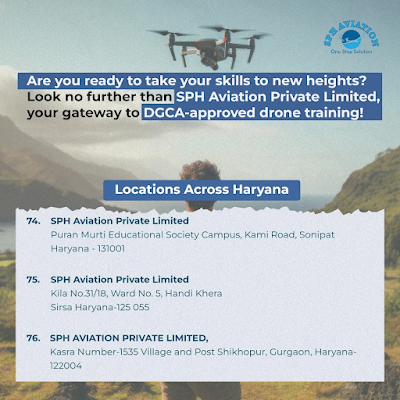
2024
The Evolution of Drone Technology: From Military Use to Everyday Applications
Drones, once the exclusive domain of the military, have evolved dramatically over the past few decades. Today, they are an integral part of numerous industries, transforming how we approach various tasks and creating new opportunities. At SPH Aviation, we’re committed to training the next generation of drone pilots to harness this technology's potential. Let’s explore the fascinating journey of drones and how they have become a vital tool in our daily lives.
The Early Days: Military Origins
The origins of drone technology can be traced back to military applications. Initially used for surveillance and reconnaissance, drones provided a safer and more efficient way to gather intelligence without risking human lives. Over time, their capabilities expanded to include targeted strikes and logistics support. The technological advancements made in the military sector laid the foundation for the drones we use today.
Transition to Civilian Use
As drone technology advanced, its potential for civilian applications became apparent. The transition began with the development of commercial drones, which were initially used for photography and videography. These early civilian drones were limited in their capabilities but sparked interest in a wide range of industries.
Revolutionizing Industries
Today, drones are revolutionizing numerous industries, each finding unique ways to leverage this versatile technology.
1. Agriculture
In agriculture, drones are used for precision farming. They provide farmers with detailed aerial views of their fields, helping them monitor crop health, assess irrigation needs, and detect pests and diseases. This data-driven approach leads to better crop management and higher yields.
2. Real Estate and Construction
Drones offer invaluable benefits to the real estate and construction industries. They provide high-resolution images and videos, giving potential buyers a unique perspective of properties. In construction, drones are used for site surveys, progress monitoring, and safety inspections, improving efficiency and reducing costs.
3. Media and Entertainment
Drones have transformed the media and entertainment industry by enabling stunning aerial photography and videography. They are used in filmmaking, sports coverage, and live events, offering creative angles and perspectives that were previously impossible to achieve.
4. Environmental Conservation
Drones play a crucial role in environmental conservation efforts. They are used for wildlife monitoring, habitat mapping, and anti-poaching operations. Drones provide a non-intrusive way to gather vital data, helping conservationists protect endangered species and ecosystems.
5. Public Safety and Emergency Response
In public safety and emergency response, drones assist in search and rescue operations, disaster response, and surveillance. Equipped with thermal imaging cameras, drones can locate missing persons, assess damage, and provide real-time information to first responders.
The Future of Drone Technology
The future of drone technology is incredibly promising. With advancements in artificial intelligence and machine learning, drones are becoming smarter and more autonomous. Here are some future trends to watch:
1. Autonomous Drones
Autonomous drones, capable of operating without human intervention, are on the rise. These drones can perform complex tasks such as delivery services, agricultural monitoring, and infrastructure inspection, making them invaluable assets across industries.
2. Urban Air Mobility
Urban air mobility (UAM) is an emerging field where drones and other aerial vehicles are used for transportation within cities. Companies are developing passenger drones that could one day revolutionize urban transportation, reducing traffic congestion and travel time.
3. Enhanced Data Analytics
As drones collect vast amounts of data, the ability to analyze and interpret this data is becoming increasingly important. Advanced analytics tools and machine learning algorithms will enable more precise and actionable insights, driving better decision-making across industries.
4. Integration with Internet of Things (IoT)
The integration of drones with the Internet of Things (IoT) will create a connected ecosystem where drones communicate with other devices and systems. This interconnectedness will enhance efficiency and enable new applications in areas such as smart cities, agriculture, and logistics.
Why Choose SPH Aviation?
At SPH Aviation, we’re committed to providing top-notch drone training to prepare you for a successful career in this rapidly evolving field. Our comprehensive courses cover a wide range of applications, from agriculture to public safety, ensuring you gain the skills needed to excel. With expert instructors, state-of-the-art facilities, and a focus on hands-on learning, SPH Aviation is your gateway to the future of drone technology.
Visit [SPH Aviation](https://sphaviation.com) to learn more about our courses and enroll today. Join us in exploring the endless possibilities of drone technology and become a part of this exciting industry.
